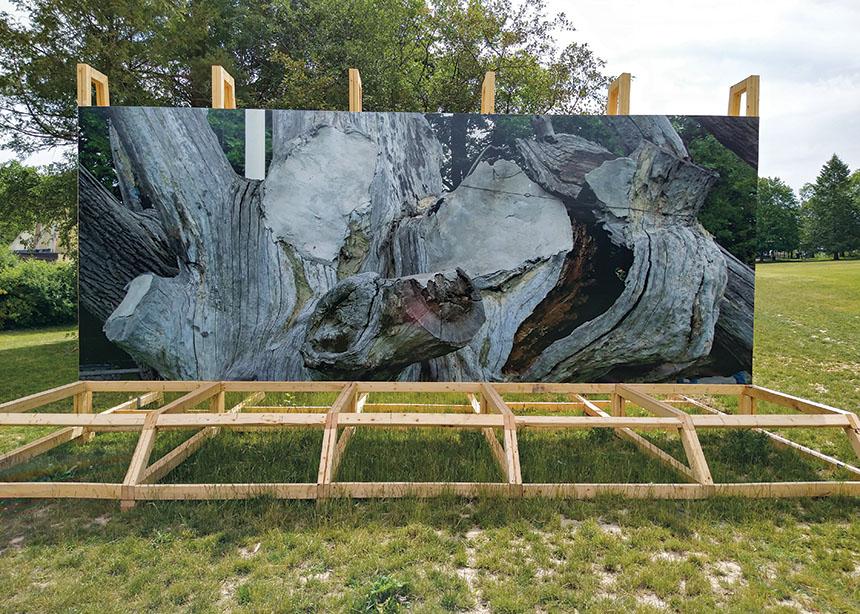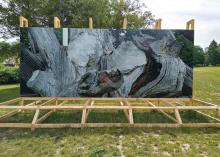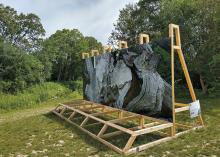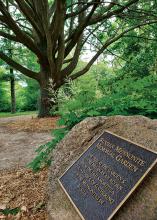I sat in the shade of an oak tree on the first day of summer outside Conrad Grebel University College in Waterloo and listened to a recording of the sounds of a spring morning at the site of that oak tree’s parent in Ukraine. A bird I couldn’t identify called repeatedly, dogs barked, vehicles rushed past, some of them headed to or from the frontline of the war, only 40 kilometres away when the recording was made.
The audio is part of an art exhibit by Kandis Friesen. The exhibit includes installations at Grebel, Waterloo Park and outside the Mennonite Central Committee office at 50 Kent Street in Kitchener. The exhibit bridges centuries and continents.
When Mennonites first settled in what was then the Russian Empire, a huge oak tree in Zaporizhzhia, Ukraine, became a centre and gathering place for the community. They named it the Hundred Year Oak, though it was already well over 100 years old. It was, as Friesen puts it, “a prediction, a wish–they would be with the oak for the next one hundred years.”
When persecution came for this community and they began to flee, they took acorns from the great oak to plant in their new settlements. The oak at Grebel and the sapling at 50 Kent both grew out of acorns from the Khortitsa oak in Zaporizhzhia.
The 45-minute recording from Ukraine is available through an app only when standing within the circle of either of these younger oak trees. The audio closes the space between Ontario and Ukraine, and for a moment, I could believe myself there by the great oak.
The second part of Friesen’s installation, a billboard in Waterloo Park, shows an enlarged photo of the old Khortitsa oak, which is now dying, bleached and held together with cement and rusted wire. The image reinstates the distance.
I stood before the billboard, knowing my safety from active war, my own separation from the persecution my ancestors experienced. I was reminded of my own complacency in colonialism, in trees as monuments planted on the Indigenous land my forefathers and mothers settled.
The exhibits are free and will remain available until July 22.
A.S. Compton serves as interim production assistant with Canadian Mennonite.







Add new comment
Canadian Mennonite invites comments and encourages constructive discussion about our content. Actual full names (first and last) are required. Comments are moderated and may be edited. They will not appear online until approved and will be posted during business hours. Some comments may be reproduced in print.